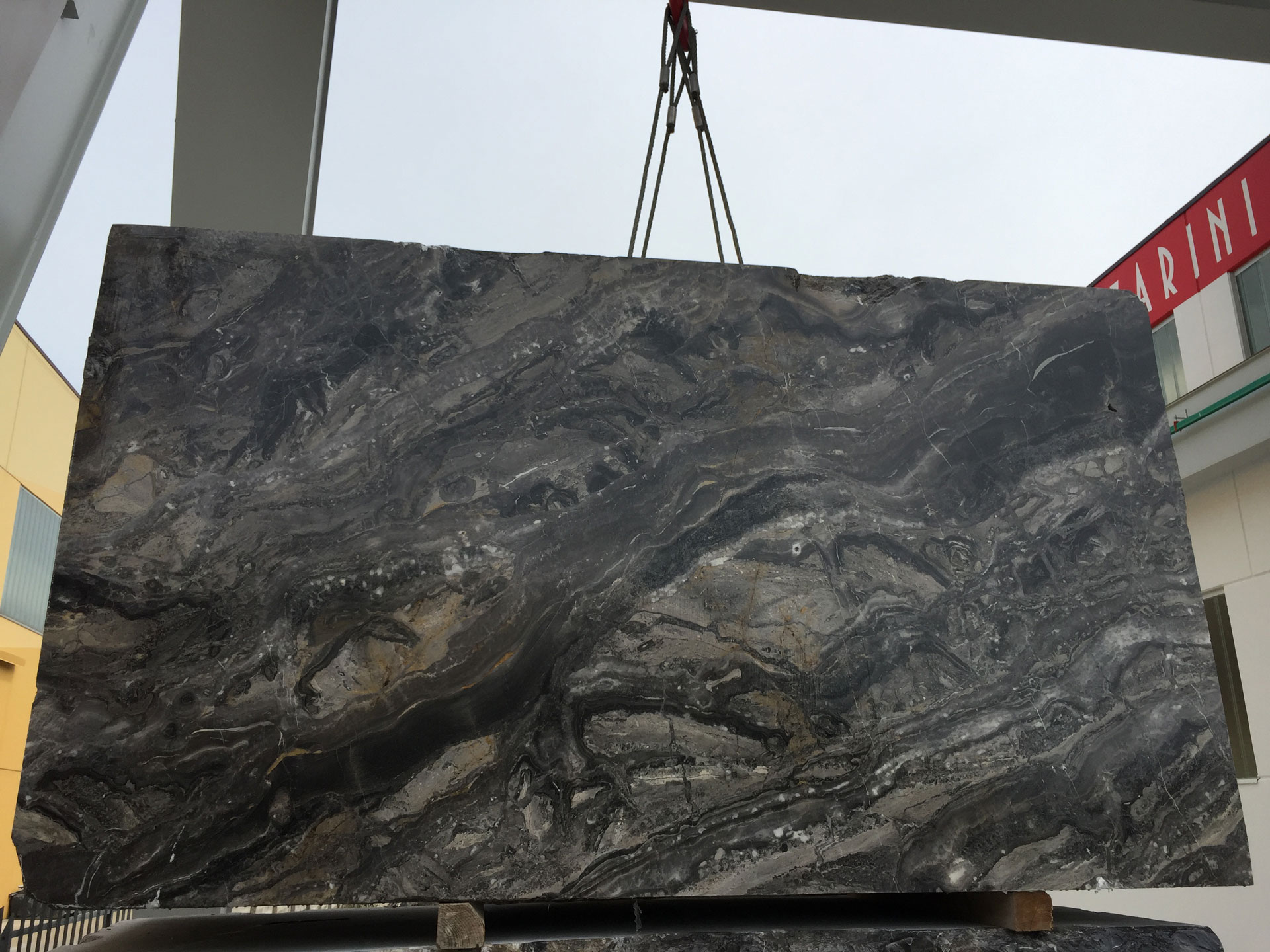
Our high-quality material
Orobico Grey
What is Grigio Orobico Marble like?
Grigio Orobico (also known as Arabescato Orobico Grigio) is an Italian marble variety, extracted in the Orobian Alps, a mountain range located in the Lombardy region, Italy. This kind of marble is highly appreciated for its special aesthetic characteristics and its versatility in architecture and designer interiors. It has a predominantly grey background enriched by a cloudy, veined structure in shades of pink, brown and gold.
Grigio Orobico Marble is extracted in areas located in the Bergamo province. It is processed according to traditional cutting and finishing methods, which enhance the beauty of this material.
What colour is Grey Orobico Marble?
Grigio Orobico Marble has a predominantly grey base, livened up by a cloudy texture and veins ranging from pink to brown and gold. The veins are often intricate and form arabesque patterns, hence the name ‘Arabescato’.
This aspect makes it particularly popular for creating visually striking focal points, and the slabs are perfect for book-matched laying.
Each block of Grigio Orobico Marble is a masterpiece of nature, modelled and finished using methods that combine tradition and advanced technology, which ensure that each slab of Arabescato Grigio Orobico Marble produced is not only beautiful to look at, but also resistant and durable, to suit every use.

HOW TO USE GRIGIO OROBICO MARBLE
Grigio Orobico Marble is employed in a broad range of indoor and outdoor applications. Due to its strength and beauty, it is often selected for floors, wall coverings, kitchen and bathroom tops, stairs and decorative elements, such as fireplaces and columns.
From luxurious five-star hotel floors to elegant kitchen and bathroom surfaces, Orobico Grey Marble is incredibly versatile.
Its durability also makes it ideal for outdoor applications, where the beauty of marble can be admired in all its splendour.
A wide range of finishing
The extraordinary aesthetics of Grigio Orobico can be further enhanced through a wide range of processing techniques such as:

Polished
Polishing Grey Orobico Marble is the process that best emphasises its chromatic characteristics. Thanks to a careful finish, the unique veining and colour nuances of this natural stone shine through, making any environment it is placed in elegant and sophisticated.

Honed
Honed Grigio Orobico slabs present a smooth and uniform surface, ideal for a wide range of architectural contexts. Unlike polishing, this technique employs different abrasive brushes which make the surface look less shiny, but just as refined and elegant.

Rough
The wonder of Grigio Orobico begins with its rough form, the start of an incredible transformation process. When the marble block first reveals its true nature and rough beauty, it prepares itself for subsequent processing stages that will allow its beauty to be fully enhanced.
Request information
History of Grigio Orobico Marble
Arabescato Grey Marble, also known as Grigio Orobico Marble or Arabescato Orobico Grey Marble, is one of the most precious gems extracted in the heart of the Orobian Alps and Val Brembana. The history of this extraordinary marble, known for its unique beauty, goes back in time as far as the 17th century, when it began to be valued for its intricate design and aesthetic qualities.
Grigio Orobico Marble is extracted from historical quarries in the Bergamo province, an area rich in rock outcrops belonging to the Triassic Red Limestone Formation. The extraction techniques combined with the unique geological characteristics give Grigio Orobico slabs unique arabesque patterns.
Indeed, the term ‘arabescato’ refers to the particularly lively and sinuous pattern of this marble, which emerges when the slabs are cut transversely with respect to the alignment of minerals of various colours. These characteristics make it ideal for creations that require a strong visual impact and a touch of timeless elegance.
As previously mentioned, from as early as the 17th century, Arabescato Orobico was widely used to embellish the interiors of churches and noble palaces, testifying to its value over time. Altars, columns, balustrades and floors in the churches of Bergamo are clear examples of this. Important works made out of this marble can also be admired in St Peter’s Basilica in Rome, where it stands alongside other internationally renowned marbles.

